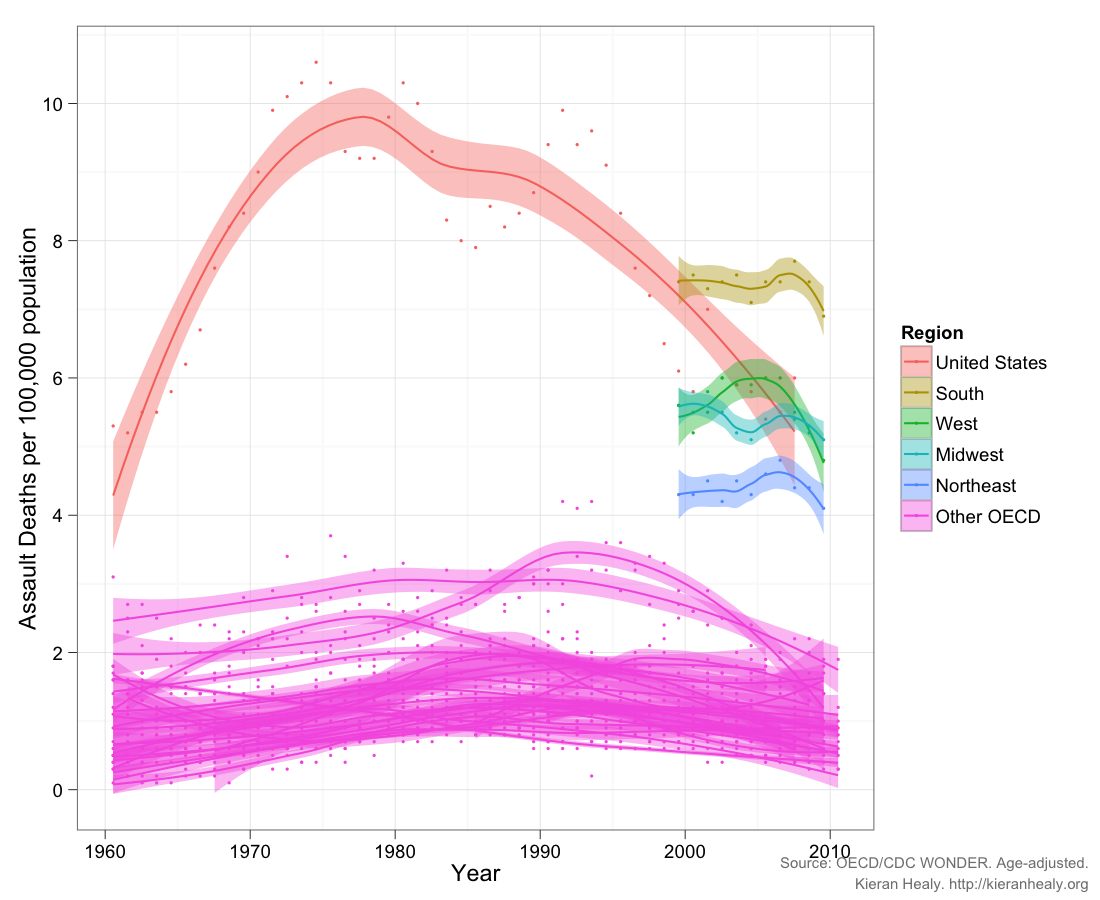Some data in easy-to-view chart format for your consideration.
Homicides by Weapon Type -
chart from Wikipedia (derived from Bureau of Justice data).
Homicide Offenders by Age -
chart from Wikipedia (also derived from Bureau of Justice data). Do some quick calculations here to see the Gen X tie in with the critical age groups in the 14-24 age brackets.
Note if you are using Google Chrome as your browser, you may see these charts as a bunch of HTML code. If so, Chrome tried to use Google Docs to support the link. You can still see the actual chart by selecting "Download Original" in the File menu at the upper left hand corner of the window.
My observations from these two charts:
1. Homicides by hand gun are clearly the dominate form of homicide in the United States.
2. Homicides by other guns (rifles and shotguns) are less than one half the rate of homicides by handgun.
3. Homicides by other guns, homicides by knives and homicides by other methods (hands and feet but not including blunt objects) are all tied at pretty equal levels.
4. Homicides are most prevalent in the 18-24 range. Usually the next highest group is the 25-34 age range but when Gen X moved through the 14-24 range, Gen X dominated the homicide rate. Now that Gen X has moved into middle age, homicide rate appear to be returning to a 'historical norm'
5. This 'historical norm' appears to be slowly lowering over time.
These charts don't show this but if you fish about in the
FBI Uniform Crime Reports, you will find that homicide offenders are overwhelmingly male. You will also find that the suburban murder rate is approximately 3 homicides per 100,000. Conversely, the murder rate in urban environments with city sizes of 250,000 to 1,000,000 is approximately 10 homicides per 100,000 population.
Therefore, murder rates correlate strongly to young (normally 18-34 but when Gen X was involved 14-24), male, urban populations. By the way, the murder rates do not appear to correlate at all to firearms availability. A little more research yields some interesting differences between urban areas. For example, compare the homicide rate of Seattle (~3.2 homicides per 100,000 in 2012) to Chicago (~15.9 homicides per 100,000 in 2012).
Hypothesis: Influencing the young urban male populations in places like Chicago similar to how Seattle does it will have an impact on homicide rates. Gun bans and gun control regulations will not impact homicide rates - although improved gun safety regulations are likely to improve accidental gun death rates.
So what does Seattle do with their young urban male population that Chicago does not?






